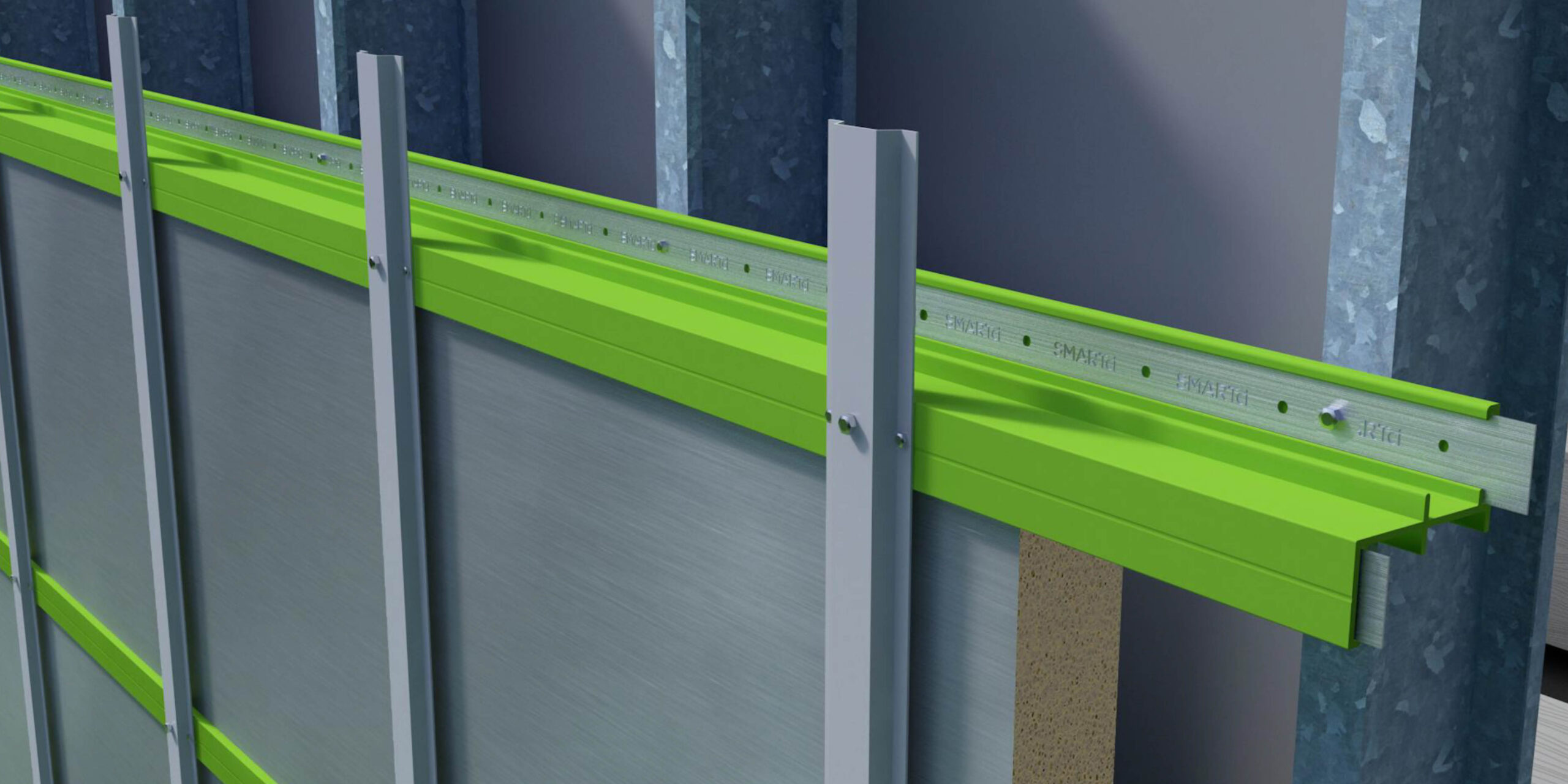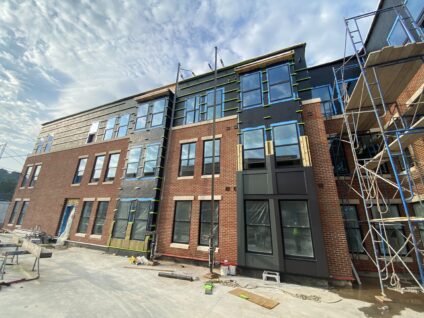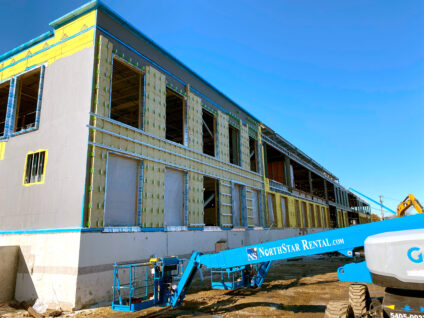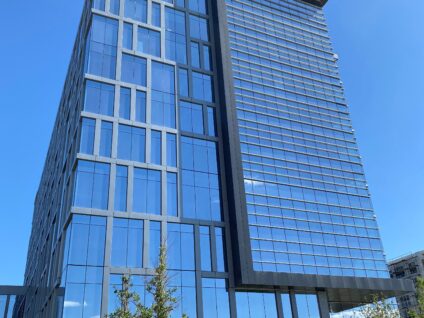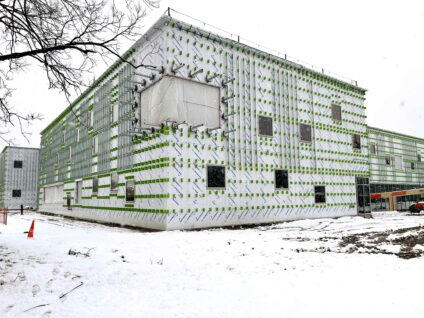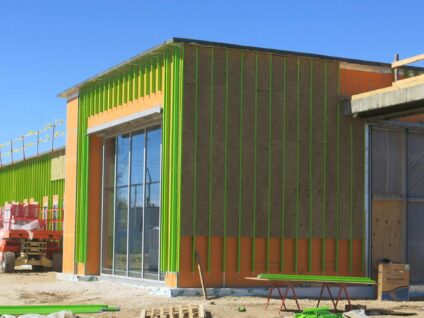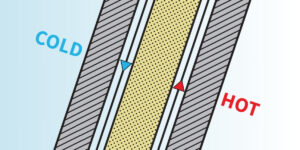Introduction
In the field of advanced building materials, Fiber Reinforced Polymer (FRP) has solidified its position as an indispensable component. Characterized by its composite structure, in which fibers are systematically embedded within a polymer matrix, FRP offers a unique combination of high tensile strength and engineering adaptability. These qualities allow for the material to cater to applications demanding both strength and flexibility.
The durability of a generic FRP assembly is not only determined by its inherent material properties, however. An overwhelming portion of its success hinges on the specific method used to connect its components. Some methods are suited to the composition of FRP, helping it maintain integrity, while other methods weaken the structure; the ultimate difference is that some methods result in a safe, permanent connection that endures for the life of the building, and other methods result in a short-term connection more prone to early failure.
To responsibly utilize generic FRP in their building projects, professionals must equip themselves with both the specialized knowledge and the proven tools to fully harness its potential. This will enable the crafting of structures that are not only robust in the immediate term, but also safe and resilient for years to come.
Continue reading to learn why bolts or backplates are key to creating a durable, permanent connection in FRP-only structures. This article will explore the mechanisms that come into play when joining FRP and, in doing so, will arm you with the knowledge necessary to boost your building’s long-term viability – just by looking at the facts and choosing a fastener accordingly.
Fiber Reinforced Polymer’s (FRP) Material Composition: Addressing Unique Needs
Generic FRP has carved out a niche for itself as a viable alternative to metals in various construction applications. However, its unique, non-metallic composition introduces specific challenges that must be addressed. Unlike metals, FRP features distinct attributes like elasticity, thermal behavior, and a layered structure. These characteristics necessitate specialized connection methods to ensure long-term structural integrity.
While a plethora of connection methods exist — ranging from traditional techniques like welding and riveting to modern approaches like adhesive bonding — each comes with its own set of pros and cons. These methods are commonly evaluated based on criteria such as load-bearing capacity, environmental resilience, and ease of maintenance. Yet material compatibility is often severely undervalued during the decision process. When leveraging the unique properties of FRP for durable performance, bolted and backplated connections begin to stand out as the connection method best-suited to capitalize on FRP’s strengths while mitigating the risks of inexpert usage.
Bolted Connections in FRP Material: Preventing Delamination and Fracture Propagation
Bolts and backplates are the standout connection option because of their comprehensive approach to addressing FRP’s key challenges, such as delamination and fracture propagation. To accomplish this, they bolster the material’s stress distribution, load distribution, thermal adaptability, tensile strength, and shear strength. In the following section, we’ll delve into how bolts excel in each of these critical areas.
The quality of a fastening method typically extends to its ability to distribute loads uniformly. When used to connect generic FRP, however, this quality becomes crucial; since FRP derives its high strength from the synergistic interaction between its composite layers, any compromise in the integrity of these components can significantly weaken the material’s overall strength. In this way, FRP’s layered structure is particularly sensitive to unevenly exerted pressure, which can initiate fractures or cause delamination — the separation of layers within the material. This not only weakens the structure but makes it more susceptible to further degradation or even failure.
Fortunately, bolts excel in mitigating such risk, especially when paired with appropriately sized washers or backplates. The washer or backplate serves as a distribution medium, spreading the load over a larger area of the FRP. This systematic distribution minimizes localized stress concentrations, often the precursors to material fatigue or failure.
The compressive force exerted by the backplate further enhances this stress distribution, making it even more effective in preventing damage accumulation over time. The backplate essentially “squeezes” the generic FRP in a way that prevents its fibers from tearing and pushing through the back of the FRP, weakening the assembly.
Another often-overlooked advantage of bolted connections is their ability to adapt to wall undulations in FRP structures. In real-world construction scenarios, the surfaces to be joined may not always be perfectly flat due to manufacturing variances or environmental factors. Bolted connections, especially when used with backplates, offer a level of adaptability that can accommodate these minor surface irregularities. The backplate can conform to the undulating surface, ensuring that the load is still distributed evenly across the connection.
By ensuring that loads are spread evenly, bolted connections optimize the structural performance of FRP components, allowing them to function effectively under varying load conditions. This is particularly important in dynamic environments where the structure may be subjected to fluctuating forces such as wind loads, seismic activity, or variable weight distribution. Bolted connections are designed to maintain clamping force over a wide range of applied loads, ensuring that the fastener remains secure even as external conditions change.
The mechanical properties of bolts, often made from high-strength steel or specialized alloys, offer exceptional tensile and shear strength. Tensile strength is crucial for resisting axial forces that try to pull the material apart, while shear strength is vital for preventing layers within the FRP from sliding past each other, which could lead to structural failure.
These high tensile and shear properties make bolts highly effective in distributing various types of loads across the FRP material, adding an extra layer of reliability to the connection, especially in dynamic environments subjected to a mix of axial and lateral forces. This adaptability to varying load conditions makes bolted connections a versatile and reliable choice, especially in real-world scenarios where structures are subjected to a multitude of dynamic forces.
Generic FRP’s differential thermal behavior between fiber and matrix is another potential problem area that bolts mitigate. If a fastener does not accommodate these thermal differences, it can lead to internal stresses, weakening the connection and potentially causing failure over time. This is especially critical in environments where the material will be exposed to fluctuating temperatures.
Yet bolts, especially when used with backplates, offer a robust solution to this challenge. The mechanical nature of bolted connections allows for some degree of movement, accommodating the differential thermal expansion between the fiber and the matrix. This ensures that the connection remains secure even as the FRP material expands or contracts with temperature changes. By addressing FRP’s unique needs — from the compressive force of the backplate to its larger stress distribution area and its thermal sensitivities — bolted connections with backplates establish themselves as the premier choice for permanent connections in FRP structures. This comprehensive approach ensures that bolted connections not only meet but exceed the specialized requirements of FRP, making them an optimal choice for long-term structural integrity.
Comparing Other FRP Material Connection Methods
While we have established the merits of bolted and backplated connections as permanent solutions, it’s essential to place them in the broader context of available fastening techniques. By exploring these with other prevalent methods, we aim to provide a comprehensive understanding of how each technique interacts with FRP’s distinct properties. This comparative lens will offer engineers and designers the nuanced understanding needed to make informed decisions, thereby optimizing the structural integrity and durability of projects involving FRP.
- Screws – Using screws as fasteners in FRP applications presents a host of challenges that can adversely affect the material’s structural integrity. The aggressive thread profiles of screws can lead to “fiber disruption” and “matrix cracking,” severing the reinforcing fibers and fracturing the polymer matrix that holds them in place. This localized damage weakens the FRP around the screw and reduces its load-bearing capacity. Additionally, the threaded nature of screws introduces “stress risers,” localized areas of stress concentration that are particularly problematic given FRP’s layered, anisotropic structure.
The introduction of these stress risers exacerbates the risk of delamination, separating the composite layers and undermining one of FRP’s key advantages — its ability to distribute loads across its complex structure. Moreover, the rotational force required to insert the screw can induce “torsional stress,” adding another variable to the already complex stress profile within the FRP material. This is especially concerning if the FRP is designed to handle primarily axial or compressive loads, as it may not be optimized to withstand additional torsional stress. These challenges — fiber disruption, matrix cracking, stress risers, and torsional stress — necessitate careful engineering consideration when screws are used in FRP applications.
Visit our article on short-term fastening here to learn more about why screws should never be used to connect FRP.
- Adhesive Bonding – Adhesive bonding offers a seamless interface for FRP materials but poses technical challenges. The temperature sensitivity of adhesives conflicts with FRP’s unique thermal expansion rates, requiring highly controlled environments for optimal curing. This mismatch can induce internal stresses in the FRP, affecting bond integrity and greatly increasing the possibility for fracture propagation. Long-term reliability is also an issue, especially under cyclic loads, which can exacerbate these stresses, and in corrosive environments, where the adhesive and FRP may degrade unevenly.
- Hybrid Methods – Hybrid methods combining adhesive bonding and mechanical fastening require precise control for optimal performance with FRP’s unique properties. The adhesive needs a controlled curing environment, while mechanical fasteners require specific torque settings. Balancing these in real-world conditions is complex due to FRP’s thermal and elastic behavior. Despite the promise of better load distribution, there’s limited research on how well these methods handle FRP’s layered structure and differential thermal expansion between its fiber and matrix components.
- Alternative Mechanical Fasteners – Mechanical fastening options like rivets and pins can create stress concentrations in FRP material, leading to structural issues like cracks. Clamps, although non-invasive, may not offer even load distribution, a key concern given FRP’s sensitivity to localized stress. They also struggle to accommodate FRP’s differential thermal expansion, potentially leading to loosening over time or under changing conditions.
In comparative analyses, while these methods have their niches, bolts often emerge as the more universally reliable and robust solution for a wide range of FRP applications.
Testing and Standards
In the pursuit of optimal performance and safety, bolt connections for FRP material have undergone extensive testing. Numerous studies, both in controlled laboratory environments and in real-world applications, have been conducted to assess their behavior under various load conditions, environmental factors, and durations.
These tests often encompass cyclic loading to simulate long-term use, tensile and shear tests to determine load-bearing capacities, and fatigue tests to understand longevity. The cumulative findings from these rigorous evaluations consistently underscore the reliability and robustness of bolted connections in FRP. Their ability to maintain structural integrity, even under adverse conditions, has been well-documented, reinforcing their position as a preferred connection method.
Conclusion
Various methodologies exist for connecting FRP components, each with its own set of merits and limitations. Yet through rigorous testing, industry standards, and real-world case studies, bolted connections have consistently demonstrated their superiority in the realm of FRP applications. Their mechanical precision allows for accurate load distribution, mitigating the risk of stress concentrations. The ease of inspection and maintenance inherent to bolted connections further enhances their long-term viability.
Ultimately, while the field of FRP connections is diverse and continually evolving, bolted connections stand out as the most reliable, robust, and technically sound option. Their versatility and proven performance make them the connection method of choice for engineers and professionals seeking to optimize the structural integrity and longevity of FRP assemblies. As the industry moves forward, bolted connections will continue to set the benchmark for connecting FRP components, reinforcing their status as the gold standard in the industry.
If you are interested in learning more about GreenGirt® CMH™, a composite metal hybrid sub-framing Z-girt, utilized in GreenGirt CMH continuous insulation and SMARTci building enclosure systems which creates a permanent connection by combining a fiber reinforced polymer Z-girt with continuous metal inserts to create a permanent connection, please visit our website or contact us today!
References & Further Reading:
- Bedford Reinforced Plastics. (2021). Design Guidelines for FRP and Bolted Connections. Bedford Publications.
- Matharu, N. (2013). Aspects of Bolted Connections of FRP Structures. EPSRC.
- Manalo, A.C., Mutsuyoshi, H., Asamoto, S., Aravinthan, T., & Matsui, H. Mechanical Behavior of Hybrid FRP Composites with Bolted Joints. Department of Civil and Environmental Engineering, Saitama University.
- Mosallam, A.S. Design Guide for FRP Composite Connections; ASCE Manuals and Reports on Engineering Practice 102; ASCE:Reson, VA, USA, 2011; 60
- Robinson, A. (2015). A Study into the Behaviour of FRP Bolted Connections. University of Southern Queensland, Faculty of Engineering and Surveying.
© 2023 Advanced Architectural Products




